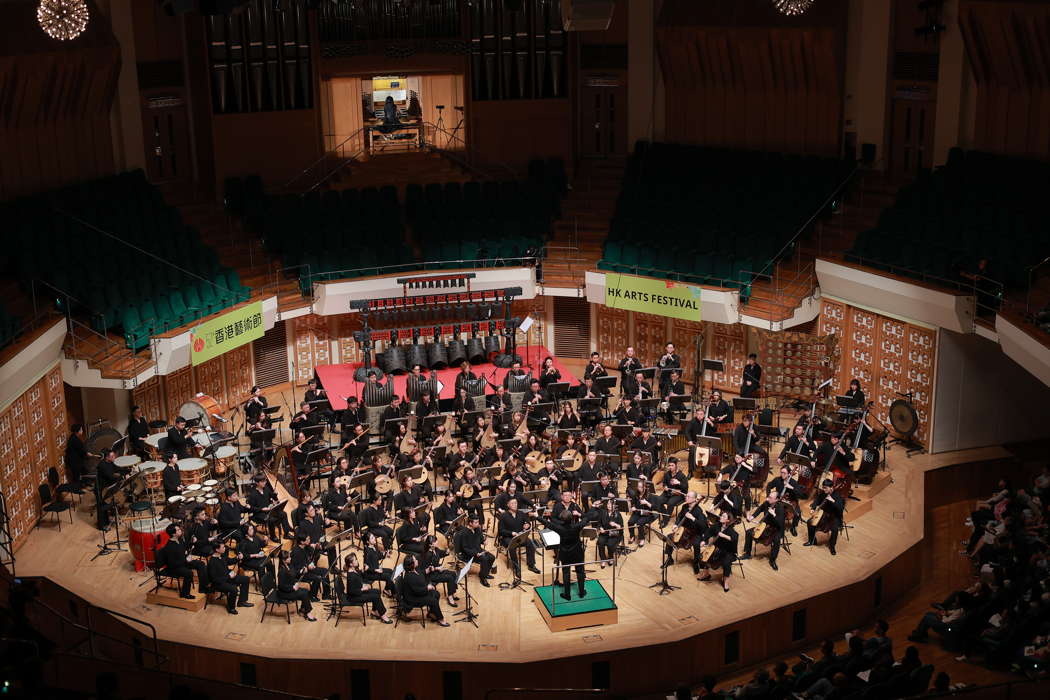- Ida Levin
- BIS Records AB
- Robert Gerhard i Ottenwaelder
- Victoria Simmonds
- MDG Preziosa
- Hrachya Melikyan
- Bowdoin International Music Festival
- Nico Muhly
PROVOCATIVE THOUGHTS: 
The late Patric Standford may have written these short pieces deliberately to provoke our feedback. If so, his success is reflected in the rich range of readers' comments appearing at the foot of most of the pages.
 PODCAST: John Dante Prevedini leads a discussion about Classical Music and Visual Disability, including contributions from Charlotte Hardwick, Robert McCarney, Halida Dinova and Giuseppe Pennisi.
PODCAST: John Dante Prevedini leads a discussion about Classical Music and Visual Disability, including contributions from Charlotte Hardwick, Robert McCarney, Halida Dinova and Giuseppe Pennisi.
Radically New for Western Audiences
ADAM J SACKS reports from the Hong Kong Arts Festival
Hong Kong's 52nd Arts Festival featured the Baltic Sea Philharmonic bringing austere Nordic winds to the sub-tropical breezes of the South China Seas. Of course the more jarring juxtaposition is their intentional heavy metal usurpation of the symphonic concert hall and its conventions. Their 14 March 2024 concert Bright and Black consisted of mostly short pieces by young composers with nary a pause to mark out the compositions distinctly.

The Baltic Sea Philharmonic's Bright and Black. Photo © 2018 Paul Gärtner
The all standing orchestra at times immersed in smoke and red lights, led by a conductor with drum instead of a baton, complete with a head banging cellist in solo position up front.

Finnish cellist, songwriter, producer and arranger Eino Matti 'Eicca' Toppinen performing in the Baltic Sea Philharmonic's Bright and Black.
Photo © 2022 Jaro Suffner
Appropriately for a rhythmically propulsive if rubato-less, overly consistent rhythm scape, basses were moved up front and violinists to the side, along with a heavily tuba dominated brass section. The genre mash-up of metal and the symphonic successfully imports the tribal-like expiation of angst of a music that is relentlessly chiaroscuro, a sound bath in reverse overwhelming the concert hall audience with a mission to recondition. The ensemble mostly holds at bay the slip into Broadway that can accompany experiments to 'popify' the orchestra.
Their follow-up concert Nutcracker Reimagined, two days later, contained no such concessions to the overtly theatrical. Tschaikovsky's original score surfaced only once or twice in a playful tapestry that mashed up Grieg, Pärt, Elgar and a number of contemporary composers. A direct enactment of child-like play and wonder on stage, yet the subversion of any order of the pieces makes legibility perhaps deliberately a challenge. The pairing of piano concerto to ballet suite does work well as unexpected counterpoint and commentary.

Baltic Sea Philharmonic's Nutcracker Reimagined. Photo © 2022 Bernd Possardt
Another felicitous pairing in a setting even more radically new for Western audiences at least would be the final concert of this year's festival - the 23 March 2024 concert Music about China: A Dialogue Between the Bianzhong and the Organ. This Hong Kong Chinese Orchestra utilizes almost entirely Chinese instruments with ancient roots and yet manages to become a whole instrument transmitting music that sounds like it comes from an unexpected future.

A scene from the Hong Kong Chinese Orchestra's
Music about China: A Dialogue Between the Bianzhong and the Organ
The instruments themselves subvert classical categories such as the upright harmonica-like free reed sheng which produces harmonies and notes on the same breath.

A scene involving the sheng from the Hong Kong Chinese Orchestra's
Music about China: A Dialogue Between the Bianzhong and the Organ
A full set bianzhong hanging bronze chimes that almost resembles an organ also contains multiple tonalities on a single tile with its bottom half struck by what resembles a galley oar.

A scene featuring the bianzhong from the Hong Kong Chinese Orchestra's
Music about China: A Dialogue Between the Bianzhong and the Organ
The stunning opening composition Reed by Wang I-Yu showcases the sheng in tandem with the organ as they progress into increasingly more dramatic and ethereal arpeggios. Particularly otherworldly is the aboriginal sounding 'Jew's harp', which surfaces in one, two and four reed formats. On the successive two pieces, Ng Cheuk-yin's Illusion Reality - an HKCO world premiere/commission - and Kuan Nai-chung's Symphony #2, the organ is deftly used as a counter-orchestra that can also at any moment super expand the orchestra beyond its inherent confines.

The organist and organ at the Hong Kong Chinese Orchestra's
Music about China: A Dialogue Between the Bianzhong and the Organ
One section of Illiusion Reality features a whole section of youthful sheng players perched up in the balcony, another remarkable and surprising orchestral expansion.

Young sheng players at the Hong Kong Chinese Orchestra's
Music about China: A Dialogue Between the Bianzhong and the Organ
Sonic revelations abound in the Chinese orchestra: the western listener will not miss the absence of brass, more than made up for the large guitar-like section of zhongruan/daruan/liquin as well as the newly patented 'eco-gaohu' - an environmentally friendly design that greatly expands the volume of these cello-like string instruments. The harmonizing of east-west in musical spirit and structure is so far along in composition and ongoing technical innovation that greater attention from the rest of the world is long overdue.
Copyright © 29 March 2024
Adam J Sacks,
Hong Kong, China



